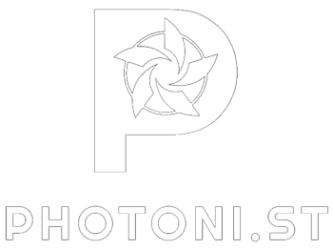I really like Substack and the people I’ve interacted with on it so far. But I’ll be a bit controversial. Because sometimes you need to look at the less bright side of life to know where things really stand. I’m feeling frustrated with some of the trends I see on Substack: if you’re on Substack but you only have a paid subscription, you’re there to make money. Not to write. Not to share. Not for readers. For money.

This isn’t my highest frustration. Far from it. That would be awarded to all those accounts that are only there to pretend to publicise how to make money and get subscribers on Substack. But that’s closely related and it really rubs me the wrong way because it goes against my philosophy. I grew up in the bazaar and with a certain ethic that is not about grabbing as much as you can from other people.
What a lot of the big accounts have done, is bring an existing money making models to a different URL. They simply followed the exodus from one platform toward another to follow the money. Nothing more. There is no intent to do anything different from what they used to do.
But on the way, to fit with the new platform ethos (aka Unique Selling Point), those accounts pretend that Substack is a different place, that’s it’s all about the writing and writers now, and that it’s not at all like IG/Twitter/TikTok/Wherever they come from, that they found their dream platform, that it’s not going to be like before. That’s where the hypocrisy comes in.
They think that nobody will notice the world repeating itself behind a super thin veneer of newness. It’s a fact that younger generations are among the worst at understanding and spotting mis and disinformation (even though they grew up in that world). But even they will see through those lies. Right?
I understand that work needs to be rewarded. Nobody should work for free. I know very well what that feels like: I’m often asked by semi-strangers and neighbours to fix their computer, their software, or their internet. At no point they consider that it’s work for me, that it requires education investment, that without spending time keeping up with technology that wouldn’t be possible. They expect it to be free because I don’t come with a white van and big red toolbox. When I ask them if they’d ask a plumber to come and have a look as their pipes on his free time because they have a leak and expect to be fixed for free, they look at me not understanding what I’m saying.
Also, whether everything you do should be considered work just because you spend time on it is debatable. This is a distinction young generations don’t seem to understand: it’s not because you spend time on something that it is work. Hobbies take a lot of time to be good at. Passions require a large time investment, even if they’re obviously not there to be work. There is an important distinction that a lot of the younger generations don’t see.
Coming back to Substack, if you have a paid only subscription (with a preview at most because you need to bait readers to sell them access), you’re not interested in your readers. You’re not interested in communicating. You’re interested in your readers’ money.
I’m not here to make money. I’m here to share, communicate, have discussions, see other people’s stuff. Yes, I spend time on the texts I write (badly, I admit), on the photos I take (equally badly), and on managing associated websites (not so badly, it used to be my job after all). But it’s my hobby. It’s not meant to be monetised. I don’t want it to be monetised and become a product that is sold like potatoes or cucumbers. I do it even though it will bring me no financial advantage, because I do it for the pleasure of doing it, and because maybe, to a tiny ridiculously small extent, someone might also enjoy it and benefit from it. Things don’t need to go further than that.
You’ll probably say I use Substack and social media wrong, but I don’t know how many subscribers I have. I never look and I don’t care about it. I don’t know how many times a post is open. I don’t know which are successful and which aren’t. I don’t know when is the best moment to post. I don’t know how to increase reach, readership, and return. When I post something, a single answer makes my day. That means that someone read what I wrote, thought about it, and decided to participate in the discussion. This is for me what a sharing platform is about.
I didn’t set up a paid subscription. I care about the fact that someone who wouldn’t be able to afford a subscription (because they’re expensive quickly) wouldn’t see what I write. I care that someone who wouldn’t subscribe to a newsletter might have good insight that I wouldn’t get because of a paywall. I care that readers could take part in a good and interesting discussion but won’t because things are behind paywalls. I care about the fact that if everybody puts up paywalls around their stuff, I won’t have access to anything unless I sell a kidney. I care that sharing for sharing’s sake is important and benefits everyone. I care that putting up walls means the death of the flow of communication.
At a minimum, to me a business model on Substack that values readers allows as many of them to read the content. That is what is consistent with saying that using Substack is all about writing and readers. To make money, you offer something on top of it that adds value, but isn’t your whole production. For example, additional photos, references to more research, additional findings, interviews, behind the scenes, follow ups and updates, etc. Your free content should be self contained and not require to pay to see the conclusion or the photos. I absolutely hate those posts that start with a few paragraphs and once you start scrolling to the next page, you get to the point where there’s a link to go and pay to see the rest. Nothing makes me more likely to unsubscribe immediately. Maybe it’s just me.
When the whole purpose of a platform is money making, for the owners and the users, that’s when the rot comes in. Using the platform is no longer about communicating and sharing, it’s about exploiting, trapping, and grifting. That leads to common denominator content (which for humans seems to be racism and fascism), and the lowest possible value that can sustain the model, on the edge of collapsing under its own crap. We might see soon on Substack what we see on Youtube, Twitter, IG, and elsewhere: meaningless content; content devoid of much information or value; content with a lot of advertisement; and AI-generated garbage.
Until the next exodus.
I’m not saying that Substack is that way. I hope it won’t get there. But there are worrying signs that it might be on its way. And with the hyper capitalism of the gig economy, it’s nearly inevitable.
#Substack #Opinion #IMayBeWrong

